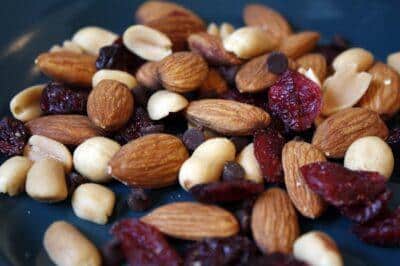Food is a critical part of survival, and hording large quantities of it at home is essential for living through a disaster or crisis.
But that’s all for long-term survival when you’re bugging in. What should you place in your survival kit for “bugging out”? What kind of foods should you keep that you’ll use while on the go?
Try these eight:
1. Beans. When stored properly in a dry and dark location, they can last as long as a decade. A can or packet of beans in your survival bag is a superb food option.
2. Cereal. As long as you can stand eating dry cereal without the milk, you can buy miniature boxes of cereal, or fill up Ziploc bags tightly to prevent the cereal from becoming stale. Your best choice: multigrain cereal packed with nutrients – and energy.
3. Crackers. If worse comes to worse, you can always make miniature sandwiches out of crackers. That being said, crackers have high fat content, making them good sources of survival food. On the other hand, it also means that they have a shorter shelf life than the other foods on this list. If you want crackers in your survival bag, rotate them.
4. Dried fruits. This refers to fruits such as raisins and apricots. Dried fruits have a large amount of dietary fiber, potassium and calories, perfect for survival.
Ultra-Efficient Water Filter Fits In Your Pocket!
5. Granola bars. Granola bars will remain fresh for as long as half of year, but beyond that, they still are filled with carbs and are very filling. As a scientific fact, the human body can get more energy from carbs in granola bars than larger quantities of food that are lacking in carbs. What’s more: Granola bars are so slim and convenient for travel, you can carry several of them in your bag or kit at once.
6. Peanut butter. Peanut butter is one of the best sources of protein and healthy fats of any food, and with most jars, you won’t have to stick it in the refrigerator after it is opened.
7. Rice. Another excellent long-term survival food, a bag of rice will remain in excellent condition for a decade or more if it’s stored properly. Rice is also very high in carbs, meaning that you can easily restore energy after strenuous physical activity. You probably don’t want to eat raw rice, but it can be cooked in a survival situation.
8. Trail mix and nuts. Trail mix and nuts are more of a snacking item rather than a food you can feast on around a campfire, but that’s a pro instead of a con. Why? Because you can eat a handful or two at regular intervals as you travel to keep your carb levels up. Trail mix that is sealed in packed containers is the best way to go, as it will preserve its freshness for months.
What foods would you add to the list? Share your tips in the section below:
 Off The Grid News Better Ideas For Off The Grid Living
Off The Grid News Better Ideas For Off The Grid Living





